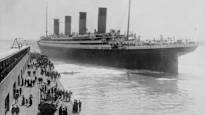The magazine is historically valuable because it sheds light on the perspective of people who lost family members in Turma.
A newspaper published in the aftermath of the sinking of the Titanic has been found after more than a hundred years in a wardrobe in Britain.
Reported about it British media BBC.
The found edition of The Daily Mirror newspaper was published on April 20, 1912, less than a week after the sinking of the Titanic.
Inside the magazine, there is an entire opening filled with pictures of the people who perished in the sinking of the Titanic.
It is significant that the newspaper’s news shed light on the feelings of the loved ones of those who died in Turma. The newspaper describes the events on the day when the locals found out if their loved ones had survived the accident.
That’s why the discovery is historically valuable, says the owner of the auction company that found the newspaper Charles Hanson for the BBC.
– We know a lot about those who lost their lives in the accident. This discovery reminds us of grieving families and friends, and heartbroken mothers, fathers and wives, says Hanson.
More than 1,500 people died when the Titanic hit an iceberg on its maiden voyage and sank on April 15, 1912.
The historical newspaper was sold on Tuesday for 34 pounds, or about 40 euros.
“A terrible day in the history of the city”
The magazine was found in the wardrobe of a house in the town of Lichfield more than 112 years after the sinking of the Titanic.
According to the finders, the woman who owned the wardrobe kept several newspapers that told about significant events in history.
On the cover of The Daily Mirror, there is a picture of two women going through a list of survivors of the accident on the wall of the building.
The photo was taken in the port city of Southampton, where the Titanic set sail and where most of the ship’s crew lived.
– Mothers and wives frantically read names only to find that their worst fears have come true, the magazine describes.
The newspaper wrote about “a terrible day in the city’s history”, “a tragedy on top of a tragedy”.
